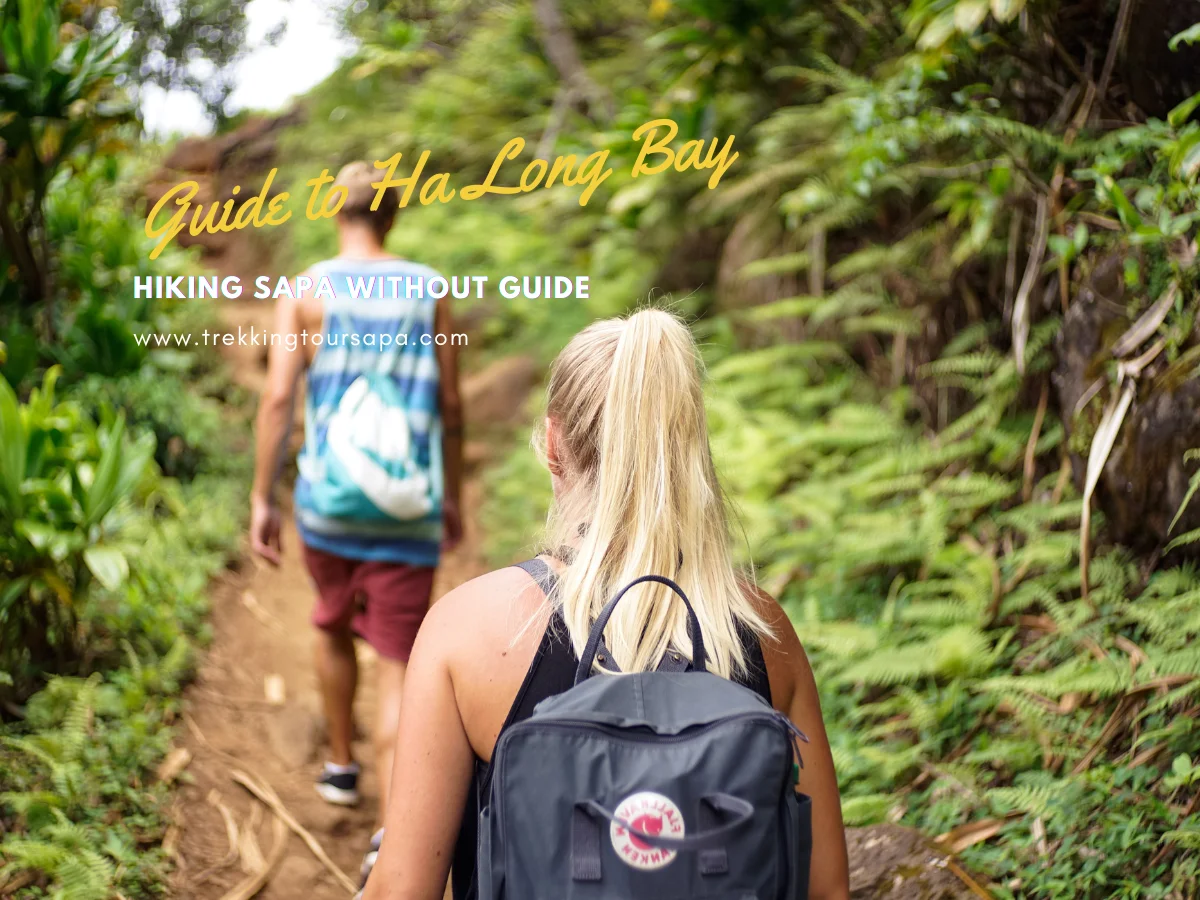Has the idea of hiking Sapa without guide ever crossed your mind? Imagine navigating the misty trails of the Vietnamese highlands, free from the constraints of organized tours, engrossed in the raw beauty of nature, and discovering cultural gems at your own pace. We’re here to discuss the thrills and essentials of solo hiking in Sapa, and the rewarding journey of a DIY hiking in Sapa experience.
Embarking on such an adventure sounds exhilarating, doesn’t it? But venturing independently through Sapa’s picturesque landscapes comes with its unique set of challenges and joys. From planning routes to cultural etiquette, we’ve put together a guide to make your solo trek both safe and unforgettable. Join us as we dive into the heart of Sapa, unaccompanied by local guides but enriched with autonomy and authenticity.
Key Takeaways
- Uncover the personalization and freedom of solo hiking in Sapa.
- Learn the significance of careful planning and preparation for a solo journey.
- Grasp the cultural encounters possible when stepping away from tour groups.
- Discover safety measures for a secure and enriching DIY hiking experience.
- Realize that solo travel in Sapa allows for intimate and genuine cultural experiences.
- Embrace the challenge and growth that come with navigating Sapa independently.
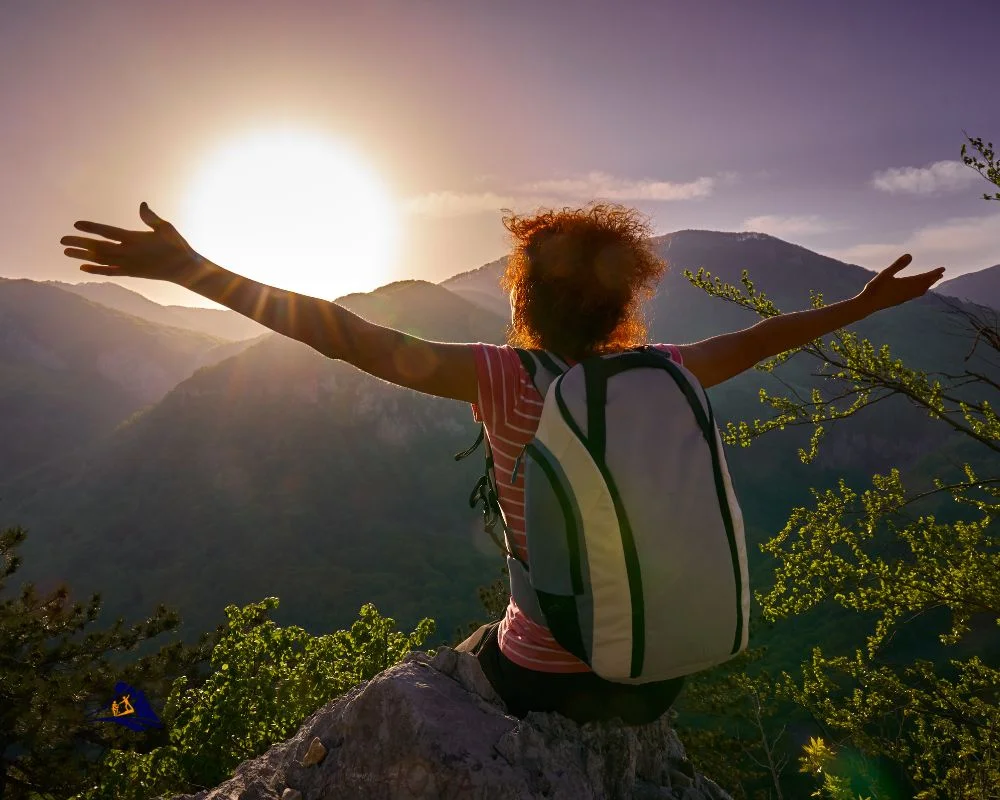
Table of Contents
ToggleEmbarking on Your Sapa Adventure: Initial Considerations
If you’re plotting a course for trekking in Sapa independently, you’re in for an extraordinary expedition filled with the dual allure of pristine nature and rich cultural tapestries. When you decide to go exploring Sapa without a tour guide, your journey begins long before you lace up your hiking boots. Planning is not just the first step, it’s the foundation upon which your entire experience rests. As we chart our own path through the enchanting landscapes of Sapa, we must invest time in research and assemble a plan that balances structure with the spontaneity of self-guided hikes in Sapa.
To ensure our trek resonates with personal meaning, let’s draw up an itinerary that echoes our pace and passions. We’ll seek out the untamed crags and gently rolling rice terraces that call for quiet reflexion, yet remain open to the chance encounters and serendipitous moments that often become the most memorable parts of travel. We believe in a roadmap that adapts as easily as it guides, leading us to the heart of Sapa.
“Each step forward on a solo trek is a step into the unknown, laden with potential for growth and discovery. It’s in these uncharted moments that we find our adventure.” – Seasoned Solo Trekker
- Research the terrains and trails: Know what to expect from Sapa’s diverse landscapes.
- Consider cultural experiences: Plan to engage with local communities and customs.
- Pack judiciously: Bring only what’s necessary for both convenience and necessity.
- Remain flexible: Allow your journey to evolve based on real-time discoveries.
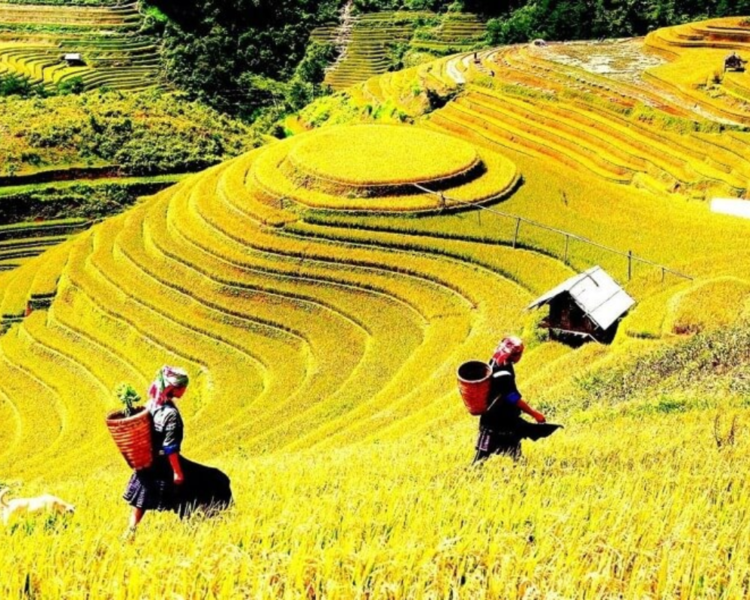
In this journey of adventure and autonomy, each decision, from the trails we traverse to the hills we climb, is ours to make. We are the masters of our own Sapa story, choosing each chapter as it unfolds before us.
| Consideration | Importance | Notes |
|---|---|---|
| Local Maps | High | Essential for planning routes and navigating trails. |
| Weather Forecasts | High | Checks help to determine suitable trekking conditions. |
| Cultural Events | Medium | Optional but enriches the travel experience. |
| Safety Preparations | High | In case of emergencies or unexpected situations. |
| Accommodation Options | Medium | Important for rest and experiencing local hospitality. |
Choosing the Right Time to Visit Sapa
Whether you’re interested in trekking routes Sapa self-guided or embarking on solo hiking in Sapa, timing is everything. The mountains of this northern Vietnamese gem are shrouded in mist or bathed in sunlight, with your experience largely hinging on the season you choose to wrap your boots and set out on an adventure.
Weather Patterns and Optimal Seasons for Solo Hiking
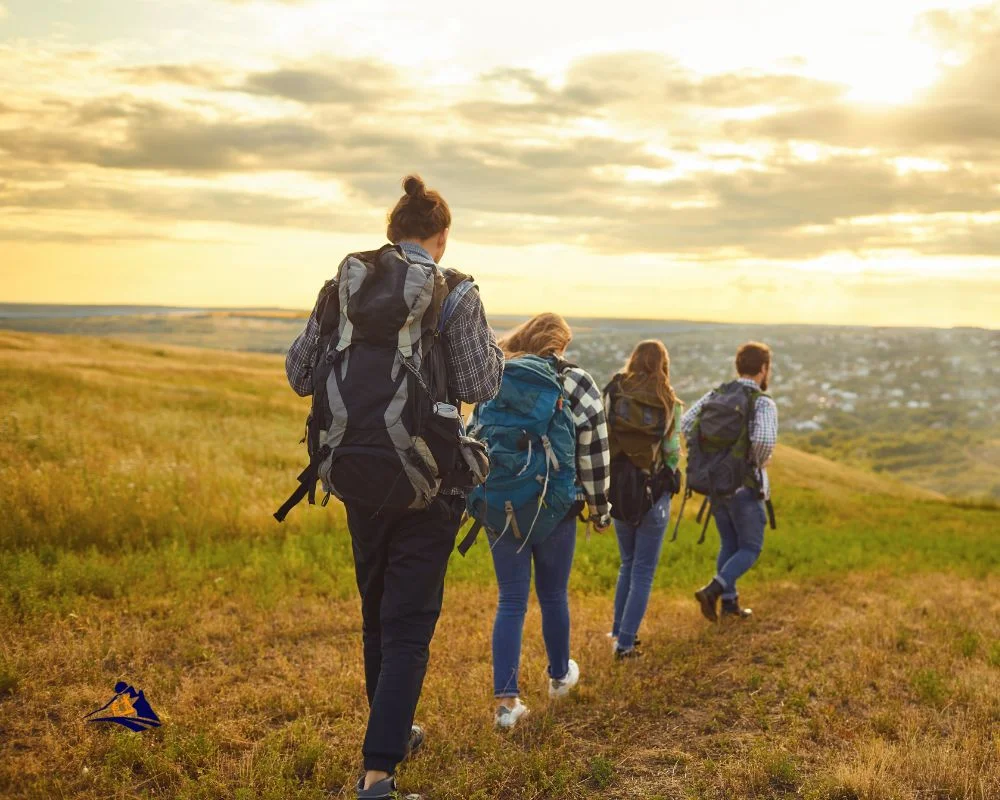
For enthusiasts eager to find the best time to visit Sapa, we find ourselves lucky to encounter two distinct windows of opportunity. The first, from March to May, when spring unfurls its crisp, cool mornings and bathes the valleys in a vibrant sea of green. The second, from September to November, brings forth a tapestry of golden hues as the rice terraces ripen, and the weather holds a perfect balance of cool breezes and clear skies. These are the optimal months for trekking, providing not only comfortable climes but enchanting views that make every step worth the effort.
Anticipating Festivals and Cultural Events
Cultural immersion goes hand-in-hand with our explorations, and Sapa’s calendar is dotted with festivals that thrust you into the heart of its traditions. Timing your hike with these cultural fetes transforms a regular trek into a colorful odyssey through Sapa’s social fabric. However, be mindful of the off-season, when the chill sets in and a blanket of fog often obscures the landscape, limiting outdoor activity. While some prefer the solitude this season brings, others may miss out on the vibrant energy and open-air adventures that Sapa is celebrated for. As experienced travelers and guides in this culturally diverse region, we recommend keeping an eye on local festival dates to fully embrace the region’s heritage alongside your solo hiking in Sapa expedition.
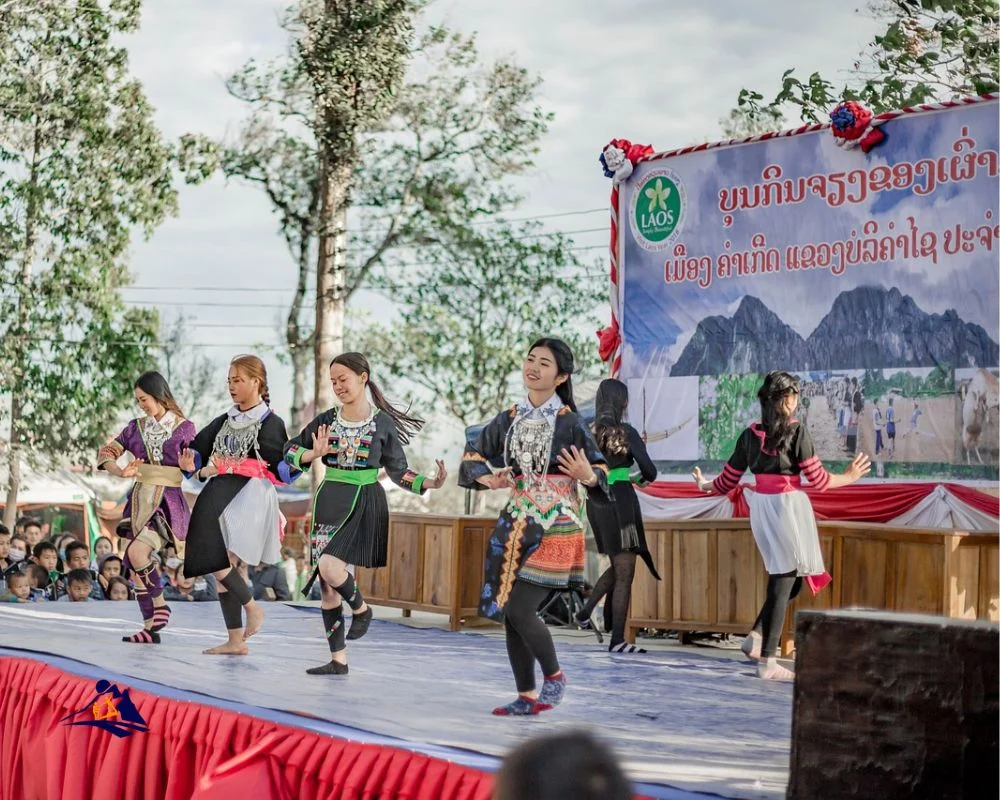
Securing Lodging in Sapa: From Homestays to Hostels
For travelers looking to explore Sapa without a tour guide, securing the right accommodation in Sapa is a critical part of the planning process. Whether you’re after the affordability of hostels or the cultural depth of homestays in Sapa, there’s something to match every preference and budget. We believe that where you stay is a huge part of the journey, and we’re here to guide you through finding the perfect Sapa lodging experience.
Local homestays are an ideal way to engage with the fabric of Sapa’s culture intimately. Living with a Vietnamese family not only opens up a portal into the daily life of the locals but also allows for moments of genuine, enriching interaction. On the other hand, hostels and guesthouses serve up a friendly, social vibe with simple comforts that many backpackers seek. It’s paramount to respect the customs and privacy of these generous hosts, as they invite us into their world.
| Type of Accommodation | Price Range (per night) | Experience |
|---|---|---|
| Homestay | $10 – $15 | Authentic cultural immersion; family environment |
| Hostel | $5 – $10 | Social atmosphere; budget-friendly |
| Guesthouse | $15 – $20 | Private space; comfortable amenities |
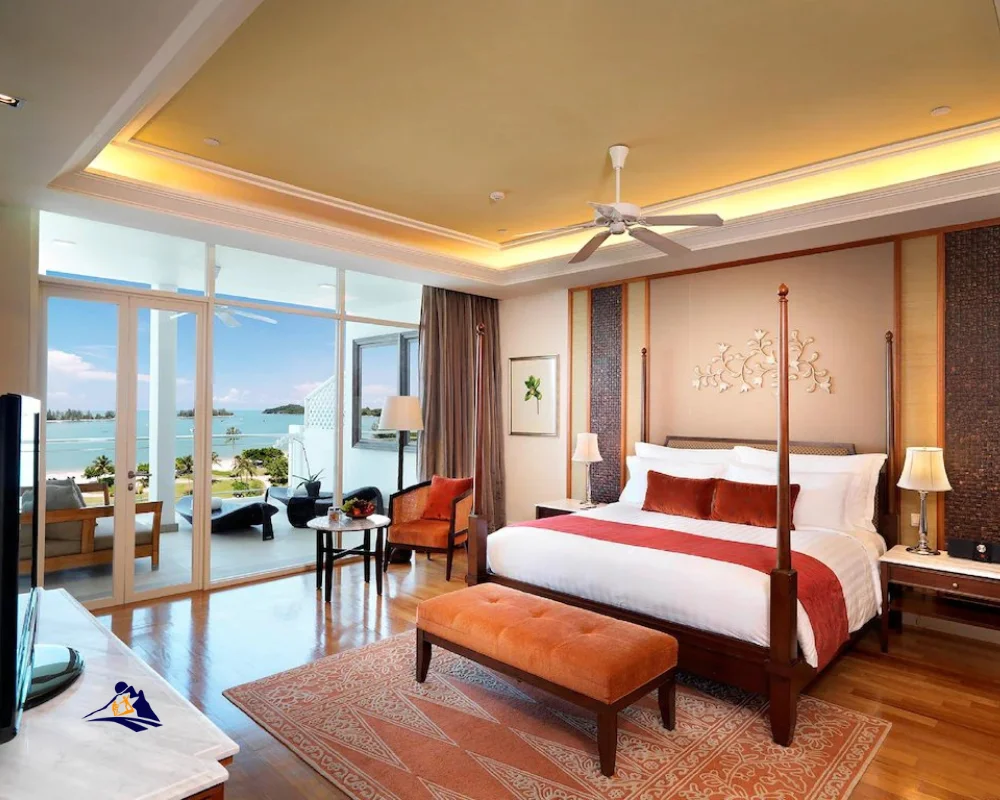
Regardless of where you decide to rest your head, it is advisable to book in advance, especially during peak travel seasons. This ensures that you not only secure a spot but also lock in the best rates. Preparing your stay before arriving in Sapa lets you put your focus where it belongs – on the adventure that awaits in the beautiful, rolling hills of this traveler’s haven.
Navigating Your Way to Sapa
Embarking on a journey from Hanoi to the scenic town of Sapa is an adventure in itself. We understand the importance of navigating Sapa without a guide and ensuring that your transportation options from Hanoi to Sapa are both cost-effective and comfortable. Join us as we delve into the multitude of transit alternatives that make the trip to Sapa not just a travel section on your itinerary, but a memorable part of your Vietnamese escapade.
Transportation Options from Hanoi to Sapa

Traveling to the breathtaking landscapes of Sapa doesn’t necessarily require luxurious spending. The most economical and commonly enjoyed transit option is the overnight train from Hanoi to Lao Cai, which is often followed by a short but scenic minibus or taxi ride direct to the heart of Sapa town. For those who value direct connectivity and minimal transfers, several bus companies offer routes from Hanoi to Sapa, taking the stress out of navigating winding mountain roads on your own.
Maximizing Budget and Comfort in Transit
While we all appreciate saving a few dollars here and there, it’s crucial not to compromise on comfort, especially when on an overnight journey. Therefore, it’s worth exploring the array of sleeper buses and luxury train services that connect Hanoi with Sapa. These options offer a higher level of comfort and amenities, such as reclining seats or personal berths, combined with the affordability and convenience essential for savvy travelers. Prices for these plush rides typically range between $25 to $40 per way, a small investment for a significant upgrade in cruising comfort.
Regardless of your choice, we always recommend booking through reputable companies to ensure that your trip is not only enjoyable but also safe. This proactive approach to travel will maximize both your budget and your comfort, adding to the unforgettable experiences that await in Sapa.
Sapa 1 Day Tours
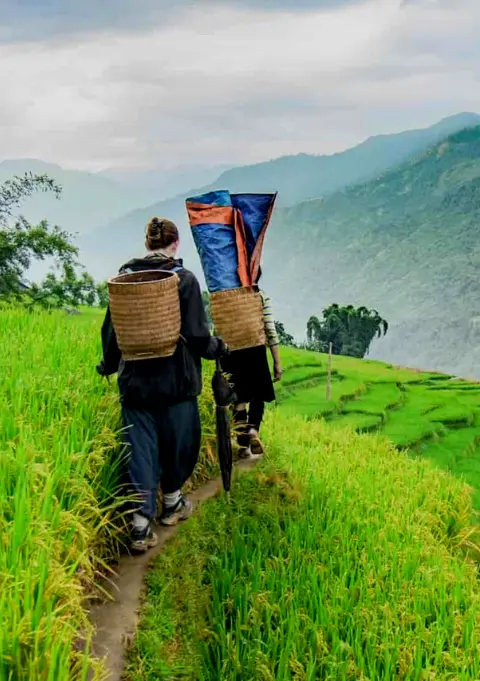
- 1 day experience
- Moderate to challenging
- Cultural immersion & active adventure
- Rice fields, valleys & villages
- Private tours
- Vegan-friendly
Sapa 2 Day Tours
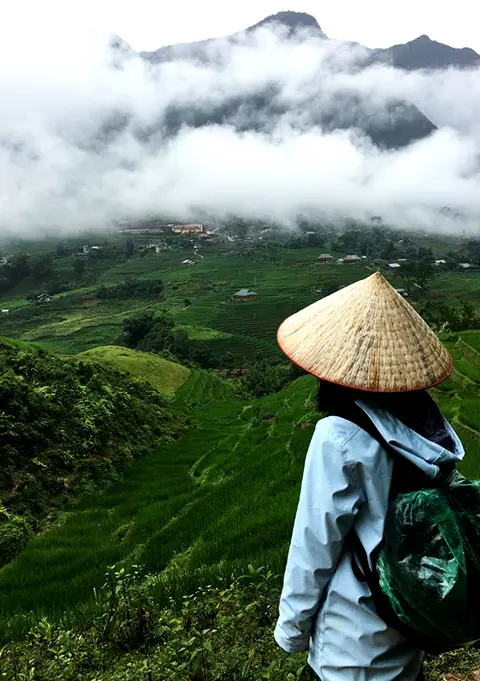
- 2 days 1 night experience
- Moderate to challenging
- Cultural immersion & active adventure
- Mountains, valleys, rice fields and villages
- Private tours
- Vegan-friendly
Sapa 3 Day Tours
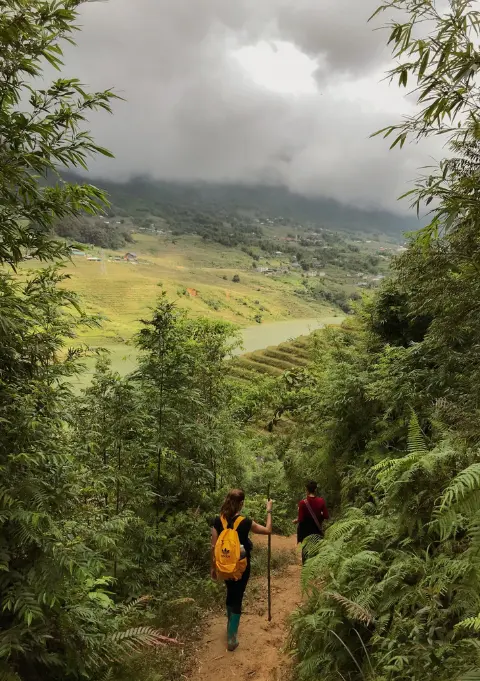
- 3 days 2 night experience
- Moderate to challenging
- Cultural immersion & active adventure
- Mountains, valley, rice fields & villages
- Private tours
- Vegan-friendly
Sapa 4 Day Tours
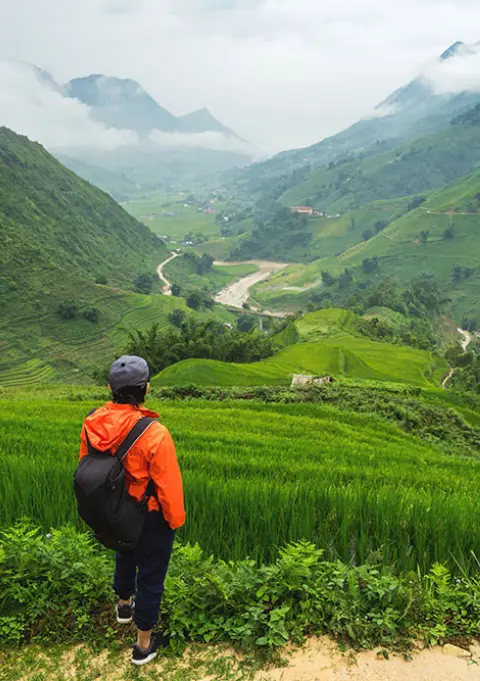
- 4 days 3 night experience
- Moderate to challenging
- Cultural immersion & active adventure
- Mountains, valleys, rice fields & villages
- Private tours – Less Touristic
- Vegan-friendly
Essential Gear and Packing List for Solo Trekkers
As we plan a solo journey along the hiking trails of Sapa, it’s essential to carefully curate our packing list. Personal comfort, safety, and preparedness are pillars of a fulfilling solo hiking in Sapa experience. Adapting our gear to the changing terrains and weather ensures we embrace the adventure with confidence.
The key to successfully navigating hiking trails Sapa solo lies in balancing the load while ensuring that the most critical items are close at hand. Therefore, here’s a comprehensive list of essential items to pack before heading out on your own.
| Category | Essentials | Additional Notes |
|---|---|---|
| Footwear | Sturdy hiking boots | Choose footwear with good ankle support and grip for Sapa’s often slippery paths. |
| Clothing | Layered attire including jackets | Evenings in Sapa can get chilly; carrying layers helps adjust to varying temperatures. |
| Navigational Tools | Map and GPS device | A physical map and a GPS can be invaluable for navigation, especially in remote areas. |
| Hydration | Water bottles or hydration system | Prevent dehydration and the risk of altitude sickness by drinking plenty of water. |
| Protection | Sunscreen, hat, and sunglasses | Protect your skin and eyes from the sun, which can be particularly harsh at high altitudes. |
| Health & Safety | First-aid kit and insect repellent | Be prepared for scrapes or insect bites on the trail with these safety essentials. |
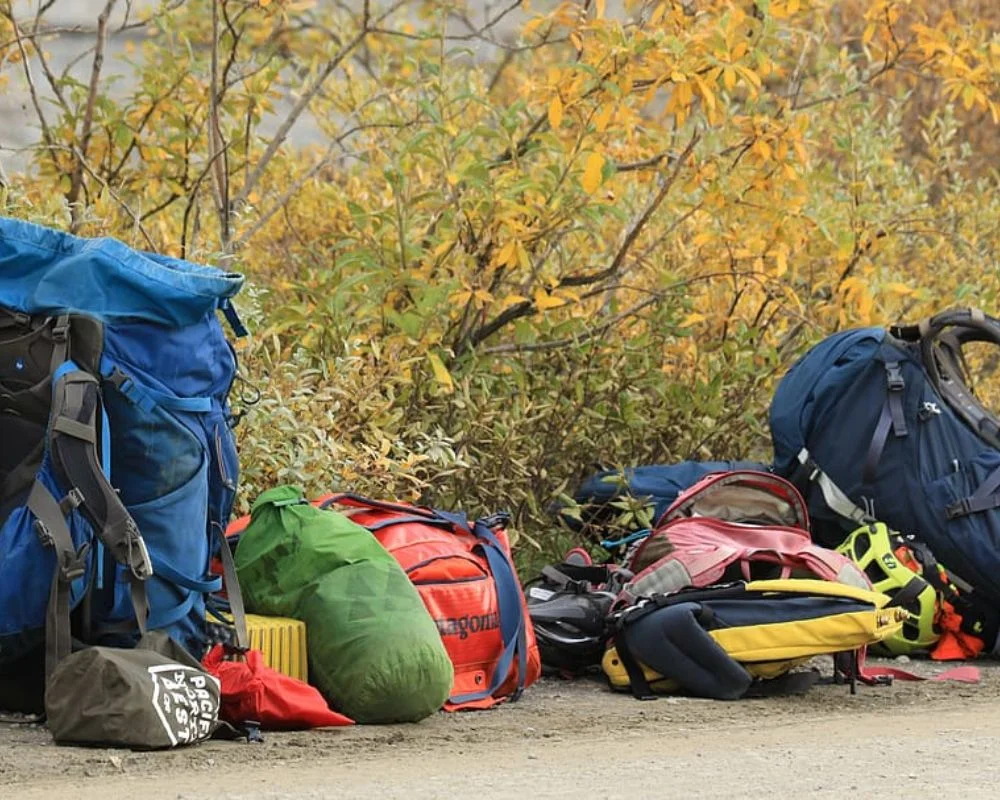
Customizing your gear to suit your personal needs and the nature of your solo adventure is crucial. Whether it’s braving the rugged trails or strolling through village paths, readiness is your adventure ally. Add a personal touch such as a journal to capture memories or a camera to document the scenic vistas of Sapa.
Mapping Out Your Route: Hiking Sapa Without Guide
Embarking on an adventure in Sapa presents the opportunity to explore breathtaking landscapes at your own pace. Hiking Sapa without a guide is a rewarding way to connect deeply with the environment and the local culture. Let’s discuss the trails and safety practices that will help you make the most out of your solo experience.
Key Hiking Trails and Landmarks in Sapa
We’re fortunate to have a variety of trails to enjoy, from tranquil walks through verdant valleys to more challenging ascents. Here are some of the trails and landmarks that should make your must-visit list when hiking trails in Sapa solo:
- Cat Cat Village: A gentle hike that offers a glimpse into the traditional life of the H’mong people.
- Fansipan Trek: A steep trail leading to the highest peak in Indochina, ideal for experienced hikers seeking a challenge.
- Love Waterfall: Discover the enchanting beauty of this natural attraction set against a lush backdrop.
- Ham Rong Mountain: Climb the stone steps and be rewarded with panoramic views of Sapa Town and surrounding landscapes.
- Ta Phin Village: Immerse yourself in the culture of the Red Dao people and revel in the village’s tranquility.

Safety Tips for Self-Guided Hikers
While the freedom of hiking Sapa solo is exhilarating, safety is paramount. Keep these tips in mind to ensure a safe trek:
| Tip | Description |
|---|---|
| Emergency Contact Information | Carry local emergency numbers and have a way to call for help if needed. |
| Stay Hydrated | Carry enough water to avoid dehydration, crucial in high-altitude areas. |
| Photography Etiquette | Always ask for permission before photographing locals or participating in their cultural practices. |
| Prepare for Weather Changes | Weather can be unpredictable; pack layers and rain gear to adapt to sudden changes. |
| Respect the Trails | Stick to marked paths to minimize your impact on the environment and respect local conservation efforts. |
Embarking hiking trails in Sapa solo rewards us with a sense of accomplishment and a treasure trove of memories. With a well-thought-out plan and a focus on safety, the experience of hiking Sapa without a guide will leave you with stories and insights that last a lifetime.
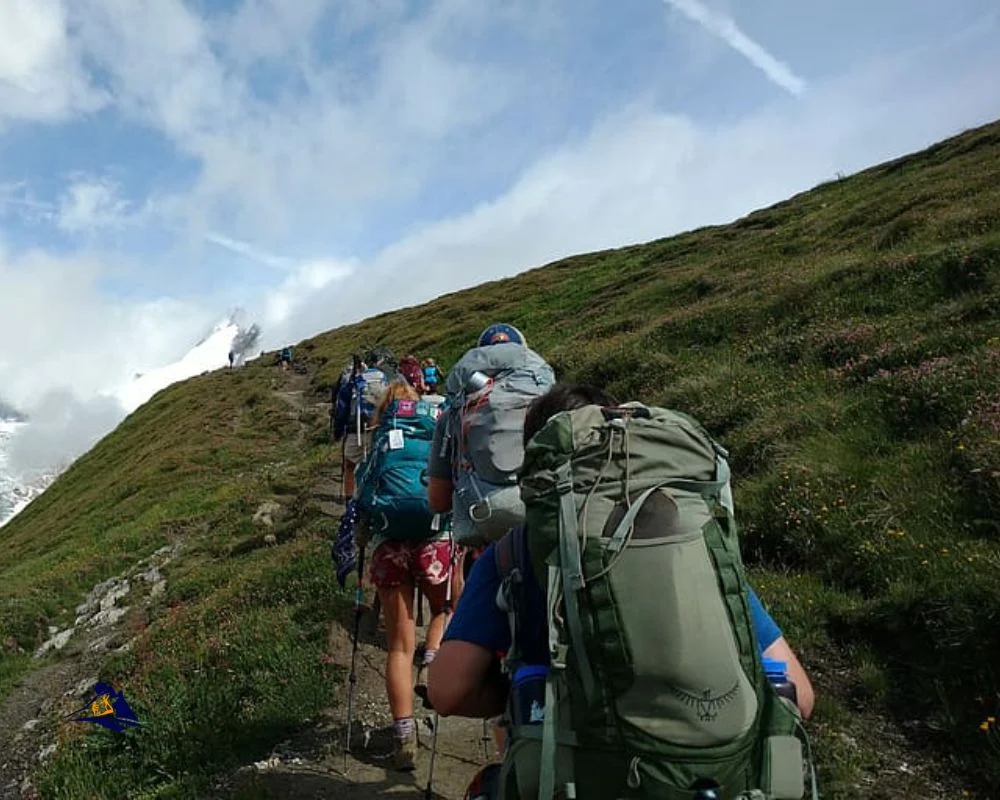
Self-Guided Hiking Perks: Embrace Flexibility and Freedom
For us, the decision to embark on solo hiking in Sapa unveils an array of unmatched perks, the most alluring being the absolute freedom and flexibility it ushers. Untethered to the constraints of a predetermined tour itinerary, we’re at liberty to fashion our own voyage through the stirring terrains of Sapa. This autonomy is not merely about setting our own pace, but it’s the sheer luxury of lingering longer at spots that captivate our hearts, or veering off the main path to uncover hidden treasures that speak to our soul.
By choosing self-guided hikes in Sapa, we dip into the culture at our leisure. We can spend hours meandering through bustling hillside markets or pause to savor the authentic Sapa cuisine, all without the usual rush. This freedom encourages us to interact more naturally with the environment and its people; it’s a passport to crafting a journey that rings true to our individual tastes and curiosities.
Below is a snapshot of experiences that solo hiking in Sapa offers, with each aspect highlighting the benefits of self-guided exploration:
| Experience | Benefits of Self-Guided Hiking |
|---|---|
| Extended Stays | Opportunity to fully immerse in the local atmosphere of a favorite spot |
| Leisurely Pace | Freedom to absorb the stunning vistas and engage with locals without feeling hurried |
| Fine Dining at Will | Chance to enjoy Sapa’s culinary delights on your own schedule |
| Unplanned Detours | Flexibility to follow intriguing leads or recommendations for raw, uncommercialized experiences |
| Cultural Connect | More intimate and profound engagements with local communities |
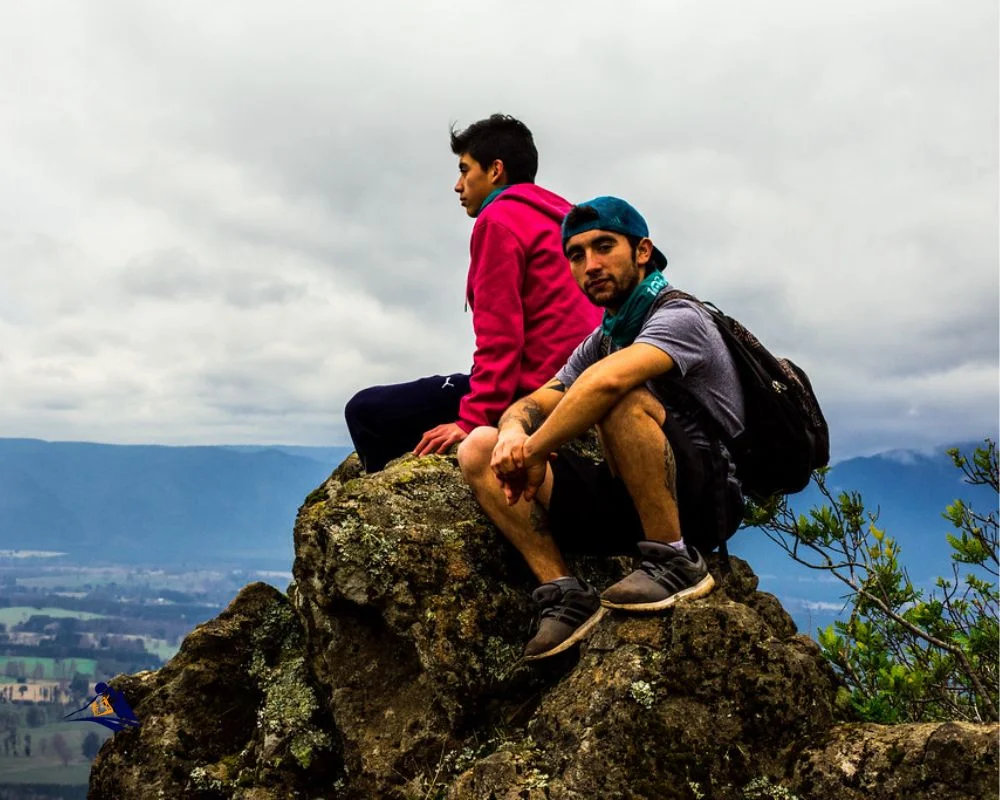
Whether we’re absorbing the tranquility of the rice terraces or exchanging smiles with the indigenes, self-guided hikes in Sapa prompt us to embrace the journey as much as the destination. The privilege of directing our own paths in this verdant adventure not only satisfies our wanderlust but also echoes the essence of true exploration.
Understanding Sapa’s Cultural Landscape
For those who seek to explore Sapa without a tour guide, the cultural landscape unfolds with every step taken through the lush valleys and terraced hillsides. Immersing oneself in Sapa’s multi-ethnic mosaic isn’t merely about appreciating the panorama—it’s about diving into the cultural intricacies that make this region so enchanting.
Our own experiences tell us that to truly embrace cultural immersion in Sapa, it comes down to two essential aspects: interacting with the ethnic minority communities and understanding the cultural etiquette for respectful engagement. Forging connections with the indigenous groups, such as the H’mong, Red Dao, and Tay, goes beyond just observing their livelihoods; it involves an open heart and mind ready to experience and learn from a culture that may be vastly different from our own.
Interacting with Ethnic Minority Communities
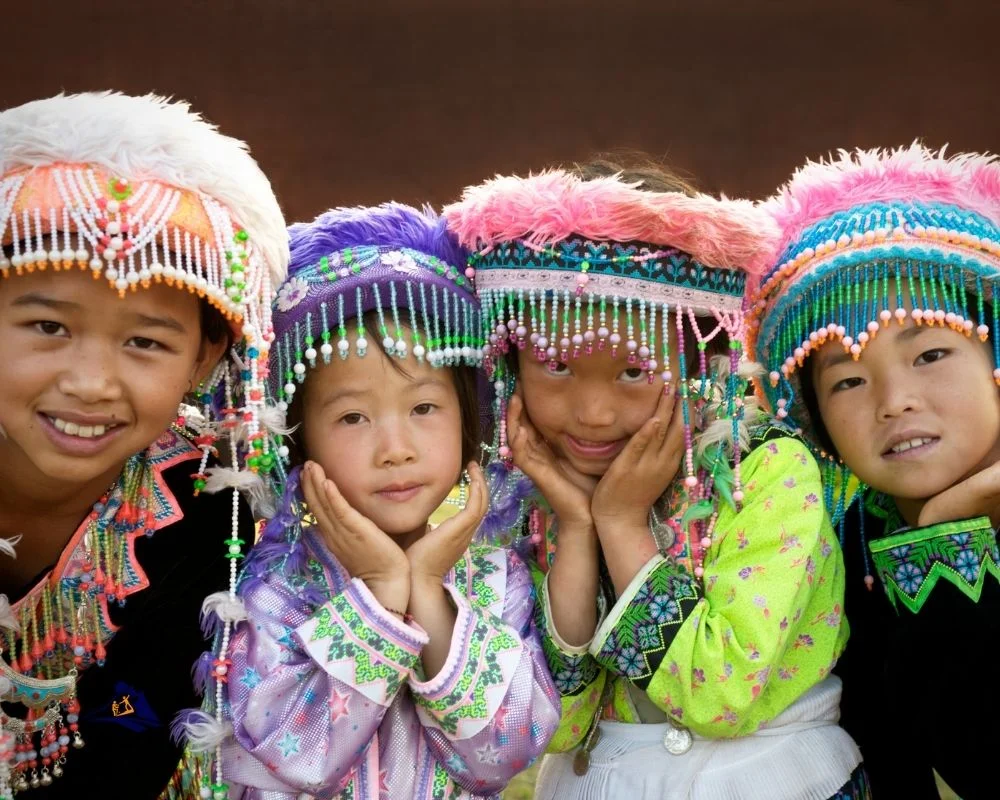
When we visit their villages and markets, or happen upon a local festival, it is crucial that our interactions are thoughtful and considerate. Learning a few phrases in their languages isn’t just useful but also shows a level of respect for their way of life, which is often reciprocated with warm hospitality. It’s the shared laughter over an attempted conversation, the exchange of smiles in a rice field, and the shared meals that remain in our memories long after we’ve returned home.
Cultural Etiquette and Respectful Engagement
In this majestic setting, one quickly learns the importance of awareness and sensitivity to local customs and traditions. Simple gestures, such as removing shoes when entering someone’s home, dressing modestly, and asking for permission before taking photographs, can go a long way in showing respect. Being cognizant of local norms helps us avoid faux pas and deepens the mutual understanding between visitors and hosts.
Above all, what resonates with us is that our journey to Sapa is not just about traversing the physical landscape; it’s a passage through a vibrant cultural tapestry. Each interaction, each shared moment reminds us that while we are explorers of terrains, we are also guests in a space that is home to a rich heritage and a proud community spirit.
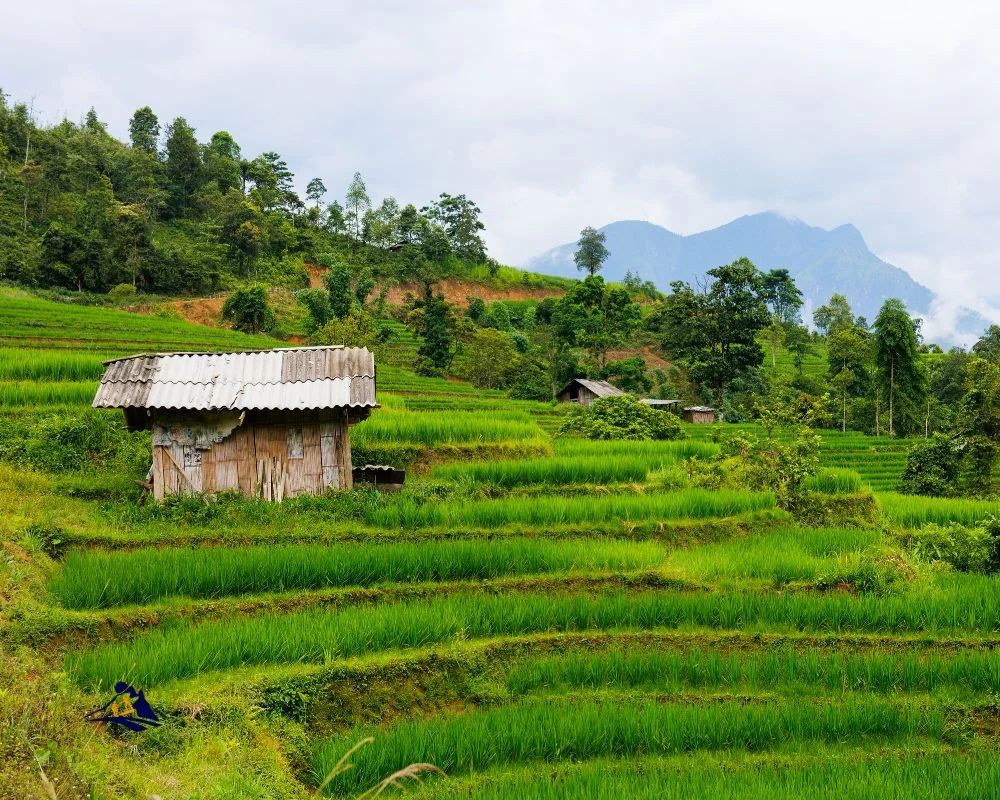
DIY Hiking in Sapa: Savoring Authentic Local Experiences
For those seeking the thrill of DIY hiking in Sapa, the anticipation of unveiling the unfiltered beauty of the landscape is palpable. We understand the allure of trekking across Sapa’s lush valleys, terraced rice fields, and charming villages independently, free from the confines of a guided group. As we immerse ourselves into this quest for autonomy, we are granted the space to forge our own path and create a travel narrative that is distinctly ours.
One of the most enriching ways to deepen our understanding of this vibrant region is by participating in local life. By staying with welcoming families in their homes, we uncover layers of Sapa’s social and cultural fabric. Here we list some key recommendations to help ensure our experiences are not only enjoyable but also respectful:
- Seek out local markets to purchase fresh, indigenous ingredients and handicrafts, supporting the community’s economy.
- Take time to learn a few phrases in the local dialects. This aids in connecting with residents, showing appreciation for their way of life.
- Follow alternative trails that offer a glimpse into lesser-known areas away from the usual tourist spots.
- Embrace the spontaneity of joining in village festivities, which allows us to experience Sapa on our own while engaging with local traditions.

Our commitment to trekking in Sapa independently doesn’t mean we have to miss out on any cultural nuances. Choosing to explore by yourself could reveal the hidden corners of Sapa that generally remain unseen by the typical traveler. In doing so, we create personal experiences that resonate with us more deeply and last a lifetime.
Feasting on Sapa’s Gastronomical Delights
As we explore Sapa, we discover that the highlands are not just a feast for the eyes but also a delightful excursion for the palate. Sapa cuisine, deeply rooted in traditional Vietnamese mountain cuisine, offers a medley of flavors that tantalize even the most discerning taste buds. Sapa’s gastronomy is a vibrant blend of textures and aromas, embodying the region’s cultural heritage and agricultural bounty.
Sampling Traditional Vietnamese Mountain Cuisine
We revel in the rich tapestry of flavors found in Sapa’s traditional dishes. Each meal is an adventure, laden with history and the essence of the mountains. Dishes like Thang Co, a hearty soup featuring horse meat and a mosaic of spices, serve as a testament to the culinary ingenuity of the local people. For those of us who prefer plant-based options, delicacies such as Com Lam (sticky rice cooked in bamboo) and Mien Tron (mixed glass noodles) are delightful, vegetarian-friendly alternatives that don’t skimp on flavor.
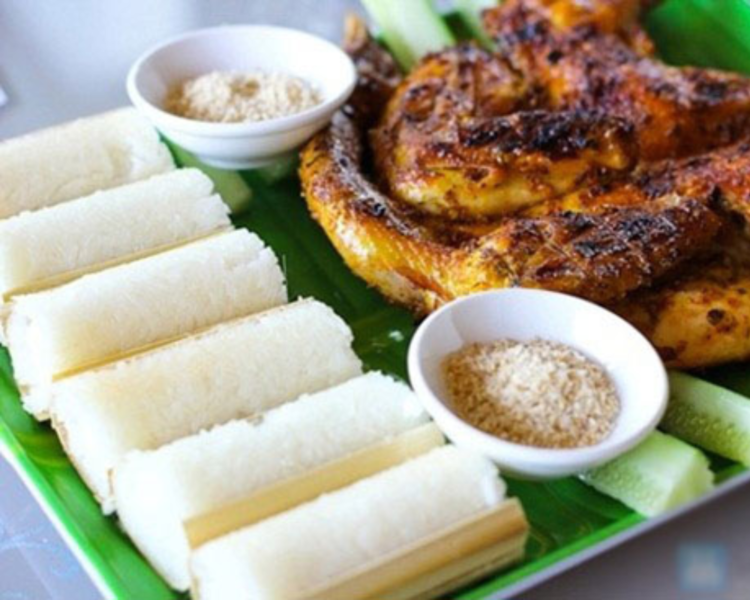
Identifying Food Options for Diverse Dietary Preferences
Whether you follow a strict diet or you’re open to trying everything, Sapa caters to all preferences. The table below highlights a diverse selection of Sapa’s dishes aimed at pleasing various palates:
| Dish Name | Ingredients | Dietary Note |
|---|---|---|
| Thang Co | Horse meat, broth, 12 types of spices | Meat lover’s choice |
| Com Lam | Sticky rice, bamboo tube, banana leaves | Vegetarian-friendly |
| Mien Tron | Glass noodles, herbs, peanuts | Vegan-friendly |
| Grilled Pork (Cap Nach) | Pork, marinade, rice wine | Gluten-free |
| Sapa Mushroom Hotpot | Mushrooms, tofu, vegetables, broth | Perfect for vegetarians |
Regardless of dietary restrictions or adventurousness, we find a unifying joy in the act of dining. Sapa’s food scene is an open invitation to explore, savor, and celebrate the traditional Vietnamese mountain cuisine that makes this region so wonderfully unique.
Navigating Language Barriers: Communication Tips
As we venture into Sapa without a guide, we understand that effective communication can make a substantial difference in the richness of our journey. By equipping ourselves with fundamental Vietnamese phrases and honing our non-verbal communication abilities, we create a bridge to the hearts and minds of the local people. It’s about showing our respect for their culture and fully immersing in the living tapestry that is Sapa.
Sapa 1 Day Tours

- 1 day experience
- Moderate to challenging
- Cultural immersion & active adventure
- Rice fields, valleys & villages
- Private tours
- Vegan-friendly
Sapa 2 Day Tours

- 2 days 1 night experience
- Moderate to challenging
- Cultural immersion & active adventure
- Mountains, valleys, rice fields and villages
- Private tours
- Vegan-friendly
Sapa 3 Day Tours

- 3 days 2 night experience
- Moderate to challenging
- Cultural immersion & active adventure
- Mountains, valley, rice fields & villages
- Private tours
- Vegan-friendly
Sapa 4 Day Tours

- 4 days 3 night experience
- Moderate to challenging
- Cultural immersion & active adventure
- Mountains, valleys, rice fields & villages
- Private tours – Less Touristic
- Vegan-friendly
Learning Basic Vietnamese Phrases
The local dialect can be a traveller’s key to unlocking a realm of shared smiles and good will. We recommend mastering greetings like “Xin chào” (Hello) or expressions of gratitude such as “Cảm ơn” (Thank you), which go a long way in fostering warm interactions. Additionally, numbers and phrases for bargaining, such as “Bao nhiêu tiền?” (How much does it cost?) become indispensable when exploring marketplaces.
Non-Verbal Communication and Gestures
While navigating Sapa and breaking through the language barrier, we remember that communication is not solely verbal. A smile can serve as a universal welcome sign, whereas a nod can signal comprehension. In moments where words fail, a point or a gesture can fill in the blanks. It’s these non-verbal cues that often speak the loudest, resonating with universal human experiences.
Here is a helpful table of basic Vietnamese phrases that can assist in smooth communication in Sapa:
| English | Vietnamese | Pronunciation |
|---|---|---|
| Hello | Xin chào | sin chow |
| Thank you | Cảm ơn | gam un |
| Yes | Vâng | vung |
| No | Không | khom |
| How much? | Bao nhiêu tiền? | bow nyeww tee-yen? |
| I don’t understand. | Tôi không hiểu. | toy khom hue |
| Bathroom | Nhà vệ sinh | nyah vay sinh |
| Water | Nước | nuh-uk |
| I’m sorry. | Xin lỗi. | seen loy |
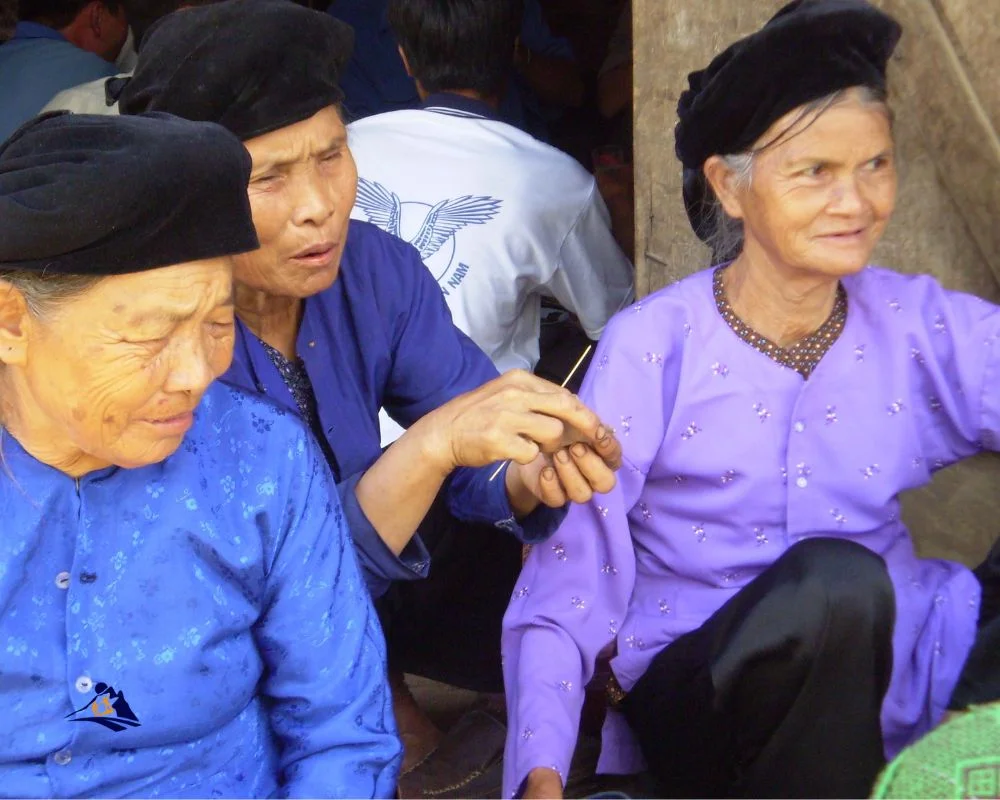
Understanding the cultural fabric of communication in Sapa is an adventure in itself. Whether we are attempting to navigate terrain or engage in small talk with a Sapa resident, these linguistic tools empower us to break down walls and deepen our appreciation of this lush landscape and its people.
Solo Hiking Safety: Keeping Healthy and Secure
When we embark on solo hiking adventures in Sapa, our safety becomes our sole responsibility. Venturing into the wilderness alone is a testament to our confidence and independence, but it also necessitates thorough knowledge about personal health and safety. Understanding how to combat altitude sickness, stay hydrated, and prepare for emergencies are all vital components of a successful solo trek in this beautiful yet challenging terrain.
Preventing Altitude Sickness and Dehydration
As we ascend the highland trails, the risk of altitude sickness lurks for the unprepared. It’s imperative for us to acclimate to the altitude gradually, allowing our bodies the time to adjust to the elevation changes encountered while hiking Sapa without a guide. Hydration is equally fundamental, as our bodies require more water at high altitudes to function optimally. By recognizing early symptoms such as headaches or exhaustion, we can take immediate steps to mitigate the effects and ensure a safe continuation of our journey.
Emergency Preparedness and Local Resources
Despite our enthusiasm for self-reliance, we must never underestimate the importance of emergency preparedness. Carrying a fully stocked first-aid kit and having reliable means of communication are non-negotiable aspects of our trekking checklist. Being aware of local resources, including emergency contacts, can significantly ease our minds in case the unexpected occurs. Additionally, informing someone about our hiking plans offers an extra layer of safety, ensuring someone trustworthy is aware of our whereabouts. With these precautions, we reinforce our commitment to solo hiking safety and ensure that our adventures in Sapa are memorable for all the right reasons.
Sapa 1 Day Tours

- 1 day experience
- Moderate to challenging
- Cultural immersion & active adventure
- Rice fields, valleys & villages
- Private tours
- Vegan-friendly
Sapa 2 Day Tours

- 2 days 1 night experience
- Moderate to challenging
- Cultural immersion & active adventure
- Mountains, valleys, rice fields and villages
- Private tours
- Vegan-friendly
Sapa 3 Day Tours

- 3 days 2 night experience
- Moderate to challenging
- Cultural immersion & active adventure
- Mountains, valley, rice fields & villages
- Private tours
- Vegan-friendly
Sapa 4 Day Tours

- 4 days 3 night experience
- Moderate to challenging
- Cultural immersion & active adventure
- Mountains, valleys, rice fields & villages
- Private tours – Less Touristic
- Vegan-friendly
